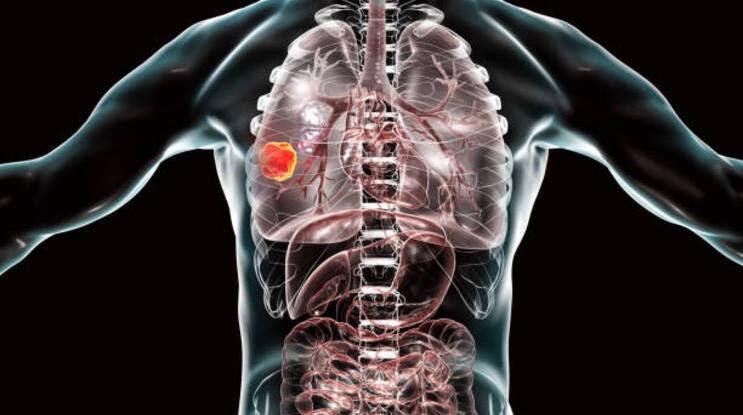Does Blue Cross Blue Shield Cover Lung Cancer Screening

Lung cancer is a leading type of cancer — and a leading killer — in the United States every year. The good news is many cases of lung cancer are believed to be preventable, as an estimated 90% of lung cancer cases are caused by active smoking, including inhaling secondhand smoke.
However, in some cases, lung cancer has other causes, such as occupational exposure to toxins, especially for those who are high risk due to other lung-related medical problems like asthma. To minimize your risk, make sure you know and understand the basics of lung cancer, including the statistics, risk factors and preventative measures you can take.
Lung cancer is currently the deadliest type of cancer for both men and women in the United States. Up until 1987, breast cancer was the leading cause of cancer-related deaths in women. Lung cancer surpassed breast cancer that year, and it continues to be the leading cause of cancer-related deaths in women, followed by breast cancer as the second leading cause and colon cancer as the third.
It is estimated that as many as 25% of cancer deaths are attributable to lung cancer. Additionally, the overall five-year survival rate for lung cancer — 18.6% — is exceedingly low when compared to other types of cancer.
What Are the Risk Factors for Lung Cancer?
The major cause of most types of lung cancer is smoking, and it is estimated that active smoking causes 90% of lung cancer cases. According to the American Lung Association, women who smoke are 13 times more likely to develop lung cancer than someone who has never smoked, and men who smoke are 23 times more likely to develop lung cancer. Secondhand smoke is another huge risk factor that contributes to more than 7,000 lung cancer-related deaths each year.
Beyond the smoking-related cases and deaths from lung cancer, other risk factors for lung cancer includes radon exposure, which accounts for 10% of cases, occupational exposure to carcinogens, which accounts for roughly 9% to 15% of cases, and outdoor air pollution, which accounts for 1% to 2% of cases. (The combination of different types of exposure explains why these numbers add up to more than 100%.)
How Can I Prevent Lung Cancer?
The best thing you can do to prevent lung cancer is avoid smoking. Never start smoking if you have never smoked and quit as soon as possible if you already smoke. Ask for help from your physician if you feel you can't quit on your own. Plenty of successful treatment options are available to help you quit.
Other things you can do to prevent lung cancer include avoiding secondhand smoke. Insist that people around you smoke outside and away from others and definitely urge your friends and family to quit as well. When you're at work, secondhand smoke shouldn't be a problem, but try to avoid other carcinogens as well.
If you're supposed to wear personal protective equipment at work, such as a face mask, wear it. Follow Occupational Safety and Health Administration (OSHA) guidelines as well as your employer's instructions for safety. You should also have your home tested for radon. Radon exposure is the second leading cause of non-smoking related lung cancer cases. Finally, exercise regularly to keep your lungs strong and improve lung function.
What Are the Symptoms of Lung Cancer?
There are two distinct types of lung cancer: non-small cell lung cancer and small cell lung cancer. However, the symptoms are very much alike. Early symptoms include shortness of breath, wheezing, lingering cough, coughing up blood, loss of appetite or weight loss, unexplained fatigue and chest pain that worsens when you cough or laugh.

As the cancer spreads, symptoms may change with the development of tumors. Symptoms of worsening stages of lung cancer may include pain in the neck or collarbone (lymph node pain); pain in the ribs, back or hips (bone pain); headaches and dizziness; and yellowing of the eyes or skin (jaundice). Tumors can also cause swelling of the neck, face, arms and upper chest.
Are There Any Treatment Options for Lung Cancer?
Treatment options depend on what stage of lung cancer you are diagnosed with and what type of lung cancer you have, non-small cell or small cell. Generally speaking, all types of therapies could include some combination of surgery to remove all or part of a lung as well as chemotherapy and radiation. It's a good idea to get a second opinion regarding type and stage before beginning any type of treatment.
Because treatment is highly invasive, you want to make sure the diagnosis is completely correct before you begin any procedure. Small cell lung cancer is much more serious than non-small cell lung cancer, so your physician may not recommend any type of treatment if the cancer is too advanced.
Source: https://www.symptomfind.com/healthy-living/basics-of-lung-cancer?utm_content=params%3Ao%3D740013%26ad%3DdirN%26qo%3DserpIndex
0 Response to "Does Blue Cross Blue Shield Cover Lung Cancer Screening"
Post a Comment